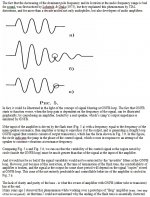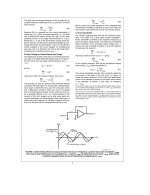Here is an example of 'flexible' compensation of the same op amp. About 1967.
I think it was Robert Dobkin who first proposed F/F to get greater speed out of the LM301 in one of their Linear Briefs. But John, that was 1967 - its now 2013 so why are we discussing this when there are a slew (pardon . . . ) of great op-amps out there that have had all of these issues completely resolved for years? In fact, the NE5534 with its external comp cap had it nailed for the most part in '78!
James Solomon's paper from 1970 (IIRC) which you have referred to a few times, did a lot to explain the inner workings of op-amps at the time, but I suspect today its fully covered in standard 2nd year level EE courses. This is progress.
🙂
Last edited:
Matti Otala and Jan Lohstroh used something similar in the amp that later became the Electrocompaniet power amp in 1973.
Of course, everybody already knew everything that I put up recently, so I don't have to bother anymore. If you have further questions, just look at the app notes cited.
Of course, everybody already knew everything that I put up recently, so I don't have to bother anymore. If you have further questions, just look at the app notes cited.
Last edited:
A good example, and accurate too!
Yes a good explanation, from the time people where starting to get their head around the issue. For audio that is; in general control systems theory this was already solved, or at least know, way before that.
Now, if you really want to contribute to the discussion, why don't you explain to the people lurking here how designers solved this issue, and why it has been a non-problem for the last several decades?
jan
Interesting that this fellow avoids showing the one waveform that counts- the one at the speaker terminals... 😀
As soon as you see someone talking about "speed" of feedback at audio frequencies, put your hand firmly over your wallet and back out the door, smiling. Don't look him in the eye.
As soon as you see someone talking about "speed" of feedback at audio frequencies, put your hand firmly over your wallet and back out the door, smiling. Don't look him in the eye.
Difficult to tell from such a short extract, but it may be that the author does not realise the wide bandwidth occupied by a gated tone. He talks about bass, but then uses a wideband test signal and seems surprised that the HF performance of the circuit affects the result.
Difficult to tell from such a short extract, but it may be that the author does not realise the wide bandwidth occupied by a gated tone. He talks about bass, but then uses a wideband test signal and seems surprised that the HF performance of the circuit affects the result.
Yes, his explainations seem more like a bla-bla, speed limit at GNFB loop can not be visible at 100 Hz range, but, nevertheless, some suspicious transient process is visible at scope's screen, at the end of the flash tone.
That is, as DF96 said, because the test signal is not a bass signal. It has infinite bandwidth, and audio amps are not designed to handle infinite bandwidth signals.
jan
jan
Interesting that this fellow avoids showing the one waveform that counts- the one at the speaker terminals... 😀
As soon as you see someone talking about "speed" of feedback at audio frequencies, put your hand firmly over your wallet and back out the door, smiling. Don't look him in the eye.
Should we talk about the loudspeaker cable induced delay?
If that will make you feel better, sure. Make certain you distinguish 1000' stadium runs from 10' living room runs, just so's not to start new audiophile legends.
That is, as DF96 said, because the test signal is not a bass signal. It has infinite bandwidth, and audio amps are not designed to handle infinite bandwidth signals.
jan
Right you are, Jan, no doubt. But this model example could be considered as a very big exaggeration of possible real situations, fast transients in audio signals, etc. And this example gives a hint (I am guessing), how deep GNFB amp-speaker interactions could affect low-level signal constituents.
If that will make you feel better, sure. Make certain you distinguish 1000' stadium runs from 10' living room runs, just so's not to start new audiophile legends.
And how much cable length is required to introduce a delay of 1 uS?
Enough to ensure you won't hear a difference (1,000,000 ft or 1K Ohms worth of 12 AWG I think)
But don't use it backwards. . .
But don't use it backwards. . .
Roughly 1ns/ft for a signal. Insulation can move that up or down a skosh.
Plus signal settling delay due to some capacitance and inductance of a cable?
By analogy with settling time of GNFB amp (can vary from 20ns to 1000ns, in spite of the small physical size of PCB).
Last edited:
- Status
- Not open for further replies.
- Home
- Member Areas
- The Lounge
- John Curl's Blowtorch preamplifier part II

